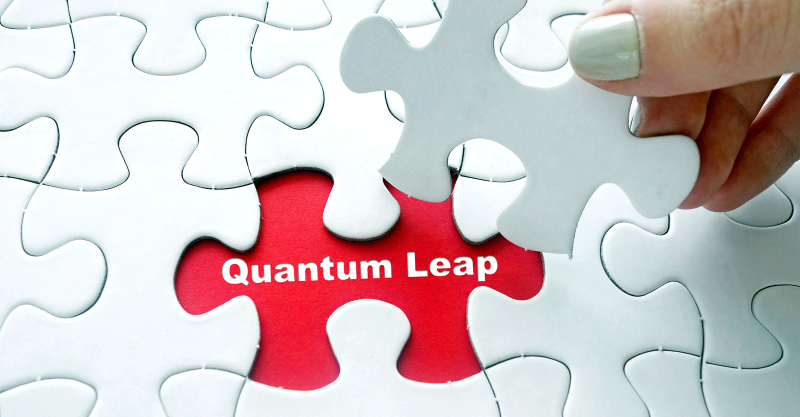Miss a day, miss a lot. Subscribe to The Defender's Top News of the Day. It's free.
Ask anyone in public health and you’ll find that they say that under no circumstances should anyone become infected with viruses like the SARS-CoV-2 virus.
They say the same thing about the measles virus. Natural immunity is anathema to them.
Even Dr. Anthony Fauci represents the COVID-19 vaccine as your best option for not “getting infected,” as if vaccines prevent the virus from entering your mucous membranes.
The biology and immunology of viral infections, however, tell us that post-vaccination infections happen all the time, and that the language on “infection” used by people in public health is misleading, simplistic — and may even be duplicitous.
The secret: Subclinical infection and post-vaccination infection in measles boosts immunity
Epidemiology points to utility of post-vaccination infection. There’s a study from 1999 titled “Effect of subclinical infection on maintaining immunity against measles in vaccinated children in West Africa.” They looked at measles antibody levels at exposure and two times later (4-5 weeks and 6 months) in 36 vaccinated and 87 unvaccinated children. They found clinical measles in 56% unvaccinated children and in 1% vaccinated children.
Evidence of subclinical measles (= asymptomatic measles) — was found in 45% of vaccinated children who were exposed to measles, and in 25% of unvaccinated children.
The fact that 45% of the vaccinated children got a boost in antibody production due to post-vaccination exposure is noteworthy. That boosting has been known for some time (see from 2003, “Current status of measles in Japan” by Nakayama, Zhou & Fujino).
“Measles infection is considered to provide lifelong immunity after an infection and, thus, live measles vaccines also induce long-term immunity. But long-term immunity is now considered to be an effect of natural boosts via subclinical reinfection. Subclinical infection has been demonstrated by sero-conversion, but the isolation or detection of the measles virus genome was rarely demonstrated”… (see more).
Relevance to COVID-19
The boosting of the immunity in the vaccinated from subclinical infection in measles is useful because the measles virus evolves far more slowly than RNA coronaviruses.
Studies have found that the reverse pathway — vaccination against SARS-CoV-2 following infection — leads to a minor boost in measured antibodies — but only a minor boost — and the boosting from post-infection vaccination depends on the variant.
Joe Rogan asked Sanjay Gupta about “leaky vaccines” — something Gupta was not immediately familiar with (he thought Rogan was talking about “leaky gut” syndrome). It’s known from a study of chickens that if a vaccine is not a good match to the circulating virus that more virulent forms will likely emerge, and that’s what is happening now with COVID-19.
Here’s a source that claims a “big boost” of immunity due to vaccination following infection. Because the virus has evolved so fast, you have to keep your eye on the date of the clinical sample collection (2/21 – 4/21), not the date of publication (7/21).
The problem with such studies is straightforward: measuring boosting of memory antibodies against a single antigen source (spike-protein receptor binding domain) from a vaccine targeting an extinct variant will not tell us that the increase in those antibodies will neutralize the current (extant) variant.
As The Highwire noted, vaccination after infection might alter natural immunity, but more data are needed to study that hypothesis.
Rogan’s speculation that people might be better off with an infection following vaccination is of interest. The press seized upon it as if he was offering medical advice to his listeners.
The reality is that public health has already told us that the vaccine will not prevent transmission, and that eventually “everyone” might be exposed. Being exposed means the vaccinated will have an initial infection — and Rogan’s hope is that infection after vaccination will confer broader immunity against the rest of the viral epitopes missed by the vaccine.
We are told by public health messaging to expect post-vaccination infections to be mild in most people.
It’s not clear if that pathway to immunity is likely to be safe enough to make it a general recommendation due to factors like pathogenic priming and the potential for disease enhancement.
The SARS-CoV-2 virus is evolving away from the vaccine so fast that antigenic shifting — adaptive evolution due to vaccine pressure — is occurring or has already taken place.
There’s also the well-known issue of original antigenic sin — in which the immune system is so entrained by prior exposure that it cannot successfully mount a new antibody response to a slightly different antigen source. Thus, vaccination first might be a bad idea, especially if the vaccine does not target the current variant.
It should be remembered that 21% of Americans had prior immunity to SARS-CoV-2 when the virus came to the U.S. Each successfully resolved COVID-19 infection has added to so-called “community immunity.”
It is now abundantly clear that the naturally immune play a large role in preventing the spread of SARS-CoV-2.
Another pathway to immunity not discussed by Rogan and Gupta is “natural immunity followed by subsequent boosting by further exposure.” As Rogan describes it, many people who are healthy can “breeze through” the infection.
There has been no evidence of widespread waning immunity in COVID-19 following infection. A study published in January found that less than 1% of 6,600 patients who had COVID-19 were re-infected.
This rate, however, is in question because the study considered “PCR positive” individuals as “confirmed cases” — and we have known from the start that this can lead to high false positive rates.
Even if we accept a 1% reinfection rate, that rate is identical to the 1% breakthrough infection rate mentioned by Johns Hopkins in early October.
Importantly, if the re-infection and breakthrough infections rates are similar, that means vaccine effectiveness for reducing case numbers and preventing transmission are near zero.
How Joe Rogan and Sanjay Gupta’s discussion could lead to rational discourse and new studies
The discussion between two people with differing views, both variously informed on specifics about the virus, the vaccine and with differing views on the public health response options to date presents a true opportunity to address the questions raised with bona fide, objective science.
The relevant question becomes: Who has better health outcomes among the following groups?
- People who are immune due to infection who do not then vaccinate.
- People who are immune due to infection who then vaccinate.
- People who have been vaccinated.
At this time, it would be unethical to not offer such patients ambulatory treatments which have been shown to massively reduce mortality — thus, all patients would receive the best care if infected.
Such a study would not merely look at case rates, hospitalization rates and deaths — but would also study total health outcomes — all medical codes — to understand the real risks associated with this novel virus and the real risks associated with these novel vaccines.
Originally published by Popular Rationalism.







